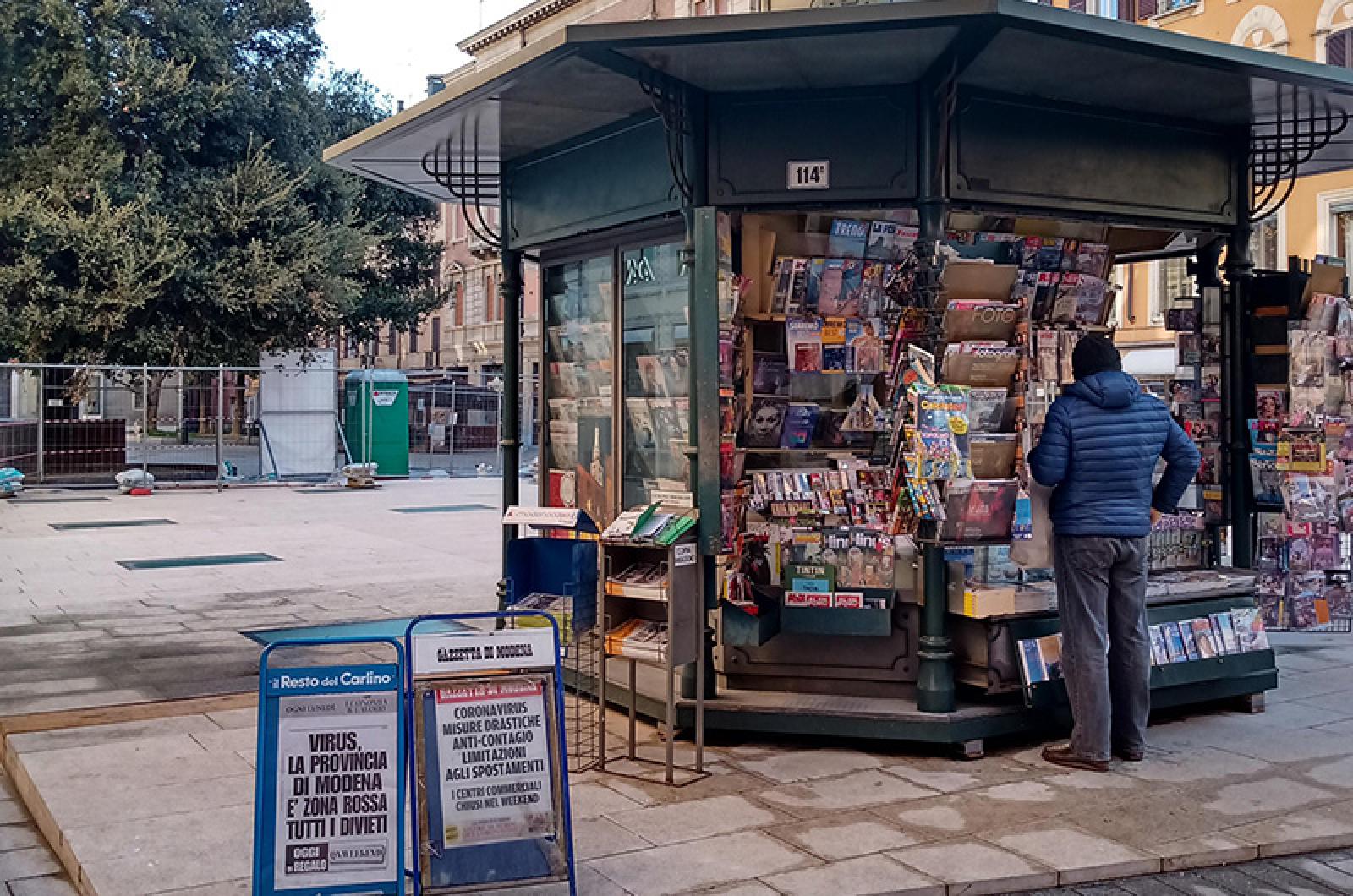Modena, Italy
Saturday morning and a strange quiet pervades this normally bustling Northern Italian city of 80,000. The church bells still ring on the hour, and at other odd periods of the day (6:15?), the tobacco shop across the street still clangs up his door grate at 7:30 a.m., the morning cleaning crew has their pumps humming at 7 a.m., washing the streets like clockwork.
Even the pigeons still roost in the sun, across from my window, on the burnt orange roof tiles, synonymous with Italian dwellings. Looking east down our tiny street of Via Santessima Trinita, I notice the doors of the ancient Santa Maria Delle Assi (a church from the 1100s which supposedly contains a vile of the blood of Jesus) are open, yet the normal morning service, of local Nigerian families, dressed all in pressed whites, is absent.
No voices fill the morning air here in Modena; shouts of greetings, salutations or consternations. Almost no cars pass along Via Canalino (the little canal). The Moroccan flower sellers, on their old bicycles, have disappeared. The always smiling Romanian, who plays a beaten up accordion on the corner, across the street, with always the same whimsical cords, has packed up his muse and fled the centre. Tiffany Bar, a student and working class haunt, normally packed with locals, and which sells fresh, hot gnocco fritto until 1 p.m. with a glass of Lambrusco or Pignoletto, is now shuttered.
The Albinelli Market, one of the last covered markets in the region, is still open, yet the mood is both somber and grave. Skittish shoppers skirt around each other like teens at their first prom, while sad-eyed vendors watch their profits slowly rot in the pleasant spring air. Masking tape delineates a one-meter space between the seller and the buyer and town police circulate among the crowds to control and fine anyone caught disobeying the government decree. The spring vegetables are still beautiful, with plump artichokes from Puglia, fresh favas with their earthy essence encapsulated in many layers, spaghetti-thin asparagus from Calabria, rough radishes from Emilia, and mounds of blood oranges from Sicily — all the bright and abundant colors of this country’s exuberant food culture, on display. Yet, the normal crowds are gone, only the brave or desperate shoppers circulate, layered in masks and gloves, avoiding any greetings, heads bent, as if in constant prayer.
A meander through the main Piazza Duomo, with its grand porticos, river stone pavings and of course, the crowning centrepiece of the 11th century Duomo itself, with its pink lions, vaulted arches and accompanying Ghirlandina bell tower, all 280 feet of it rising above the city, invokes the same strange sensation of inhabiting a city without citizens. It’s as if the world as we know it has disappeared. Older gentlemen, dressed to the nines, smoking Tuscan cigars, no longer huddle in close groups, discussing politics and soccer, children’s cries and laughter no longer ring out across the square, couples no longer stroll about, smiling into each others faces. The streets are void. A glance in every direction reveals the same stuccoed buildings, of beautiful pastel mauve, apricot and coral, completely empty, or nearly so. A bentpensioner, masked and gloved, walks an exhausted-looking Pomeranian. A Polish housecleaner, arms heavy with canvas bags of cleaners, frantically darts into a building. A well-heeled couple, dressed all in black, walk four feet apart, toward the station. But beyond these occasional glimpses of normalcy, the air is electric with an acrid tension. Fear hangs heavy in air, replacing the city’s famous fog.
And yet. And yet, the honey bees still drone over my flowering rosemary bush on the windowsill. My orchids have begun to exhibit their splendid flowers and spring birds can be heard in the parks. A colleague sent me a video of a mother duck and her chicks crossing a now empty intersection, in the heart of the city. Deer have been spotted in the suburbs. Somehow this forced cloistering has given nature the opportunity to breathe — literally — smog is at an all time low. Here in the red zone, where hundreds die every day, it’s those simple glimpses of nature carrying on, which gives us hope.
Wilde Whitcomb lives in Aquinnah and Modena, Italy.




Comments (15)
Comments
Comment policy »